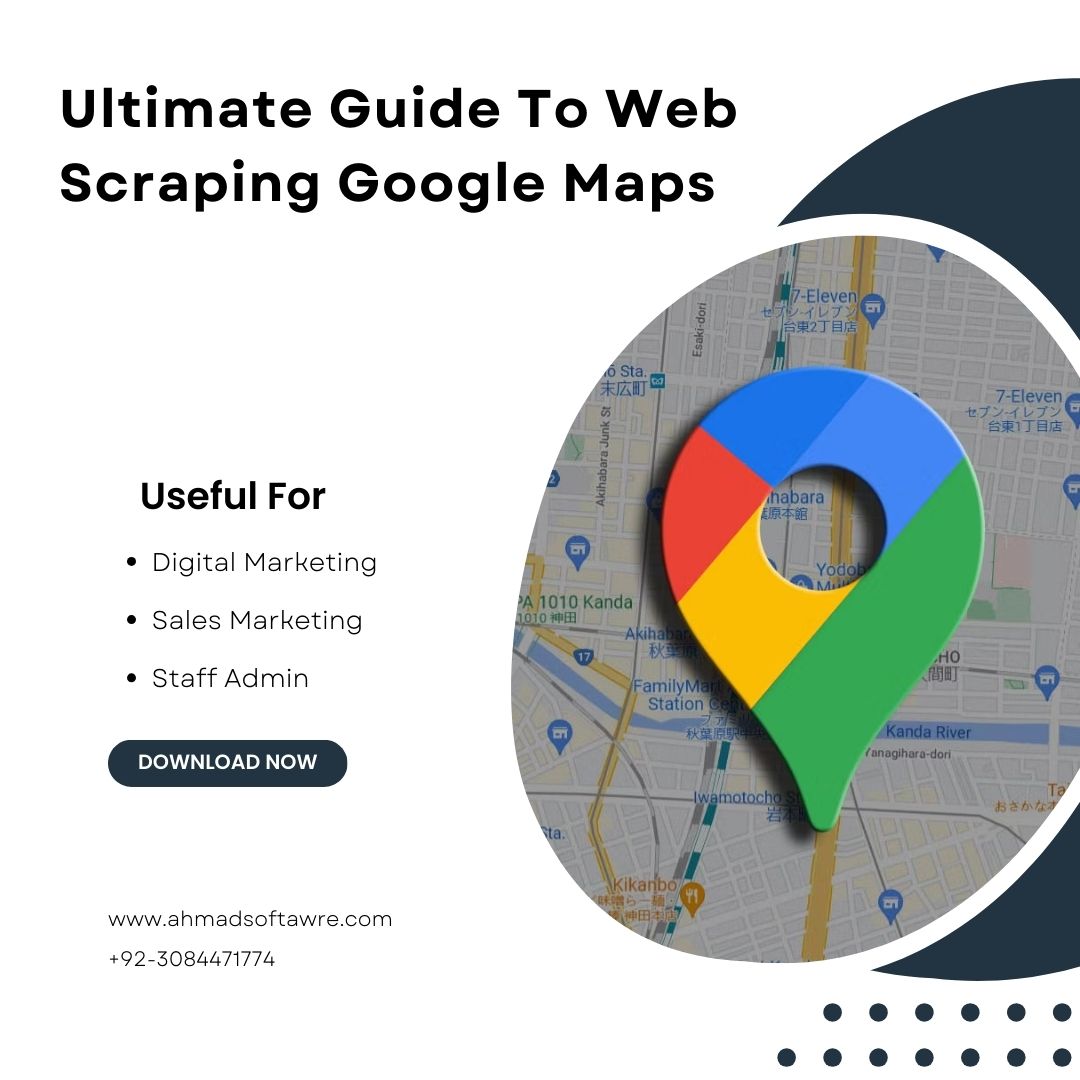
Ultimate Guide To Web Scraping Google Maps Data
- Nov 05, 2024
- | 116
Web scraping has become an essential tool for businesses and individuals alike, allowing them to collect valuable data from online platforms for various purposes. When it comes to location-based data, Google Maps is an ideal source. Google Maps contains a wealth of information on businesses, reviews, locations, contact details, and more. But how can you extract this data effectively and legally? In this ultimate guide, we’ll cover the best techniques and tools for web scraping Google Maps data, including Google Maps Extractor.
Why Scrape Google Maps Data?
Google Maps holds a vast amount of structured and unstructured data, including:
- Business information (name, address, contact number, website)
- Reviews and ratings
- Business categories and service offerings
- Hours of operation
- Location coordinates
For businesses, researchers, and analysts, this data can reveal valuable insights about market trends, competitor information, customer sentiment, and geographic patterns. However, the main challenge lies in efficiently and legally collecting this data.
Is Web Scraping Google Maps Legal?
Before diving into the methods and tools, addressing the legality of web scraping Google Maps is essential. While web scraping is not inherently illegal, scraping without permission can violate Google’s terms of service, especially when done on a large scale. Instead of directly scraping Google Maps, using the Google Maps API or tools designed to comply with usage restrictions is recommended.
To avoid legal issues, keep these guidelines in mind:
- Limit request frequency: Too many requests in a short period can lead to an IP ban.
- Avoid scraping personal information: Respect privacy regulations, especially regarding personal data.
- Use ethical scraping tools: Choose tools that adhere to Google’s guidelines or utilize API-based methods.
Tools for Web Scraping Google Maps Data
A variety of tools make web scraping Google Maps data easier, some of which operate through APIs while others perform direct scraping. Let’s explore some popular tools, including Google Maps Extractor, that offer efficient solutions for data collection.
1. Google Maps Extractor
Google Maps Extractor is a widely used tool designed specifically for extracting business information from Google Maps. Here’s how it works:
- Features: This tool extracts essential data such as business names, addresses, contact details, emails (if available), and reviews. It organizes this information into a structured format, usually a CSV or Excel file, for easy data manipulation.
- Advantages: It’s user-friendly, doesn’t require coding skills, and provides filters for targeting specific business categories or locations.
- Usage: Google Maps Extractor is ideal for marketers, researchers, and sales teams looking to build targeted lead lists or gain market insights.
While Google Maps Extractor is powerful, users should apply ethical scraping practices by limiting requests and using proxies to avoid IP bans. It’s also advisable to check the tool's compliance with Google’s policies to ensure no violation of terms of service.
2. Google Maps API
For those who want a Google-approved approach, the Google Maps Places API is a strong alternative. Although it may require a bit of programming knowledge, it provides a legal and robust method to access Google Maps data.
- Features: The Places API allows you to fetch detailed business information, including name, location, contact details, reviews, and more. It’s reliable and maintained by Google.
- Limitations: The API has usage limits and can incur costs depending on the volume of data required. Some data fields may also have restricted access or cost extra to access.
Using the Places API is ideal for developers who can integrate the data into applications or databases without violating Google’s terms.
Techniques for Web Scraping Google Maps
When scraping Google Maps data, there are several techniques to consider, each with unique advantages and challenges.
1. Data Extraction with APIs
APIs are often the most straightforward and legal method for extracting data from Google Maps. By setting up a script to call the Google Maps Places API, users can receive structured data directly in JSON format, which can then be processed for analysis. The primary advantage of API extraction is compliance with Google’s policies, which reduces the risk of IP bans.
2. Using Automation Tools
Automation tools like Google Maps Grabber, Octoparse, and ParseHub help users without programming skills collect data quickly. These tools can interact with Google Maps as a regular user would, simulating clicks and scrolling to gather information from various pages.
To ensure smooth data collection:
- Use IP rotation to prevent detection.
- Set reasonable intervals between requests.
- Avoid requesting large amounts of data within short periods.
3. Scripting with Python Libraries
For more advanced users, scripting with Python offers flexibility and customization. Libraries like Selenium and BeautifulSoup allow users to create specific scraping routines tailored to their data needs. This method requires programming knowledge but can be highly efficient.
- Selenium: Often used for scraping JavaScript-heavy pages, Selenium interacts with the browser to simulate user actions.
- BeautifulSoup: Useful for parsing HTML once data is loaded, helping you filter specific information like business names and reviews.
Python scripts allow greater control over data extraction processes, but users must monitor their scripts to avoid IP blocking and comply with Google’s terms.
Best Practices for Web Scraping Google Maps
- Respect Terms of Service: Always check the legality and terms of service for scraping data from any website.
- Use Proxies and Rotate IPs: Many scraping tools have IP rotation features to avoid bans.
- Limit Data Requests: Request data in manageable portions rather than attempting to extract everything at once.
- Store Data Securely: Ensure collected data is stored responsibly and ethically, particularly if it contains sensitive information.
- Be Aware of API Costs: For high-volume needs, consider the costs associated with API calls.
Wrap Up
Web scraping Google Maps can open doors to valuable insights, but it requires the right tools and techniques. By using Google Maps Contact Extractor, Google Maps API, or advanced automation and scripting tools, you can effectively gather data while remaining within legal and ethical boundaries. Following best practices will help ensure your data collection is smooth, efficient, and compliant with regulations. With this guide, you’re well on your way to mastering Google Maps web scraping!
Shop Now:
Email: aslogger@ahmadsoftware.com
WhatsApp: +92-3084471774

2.jpg)



